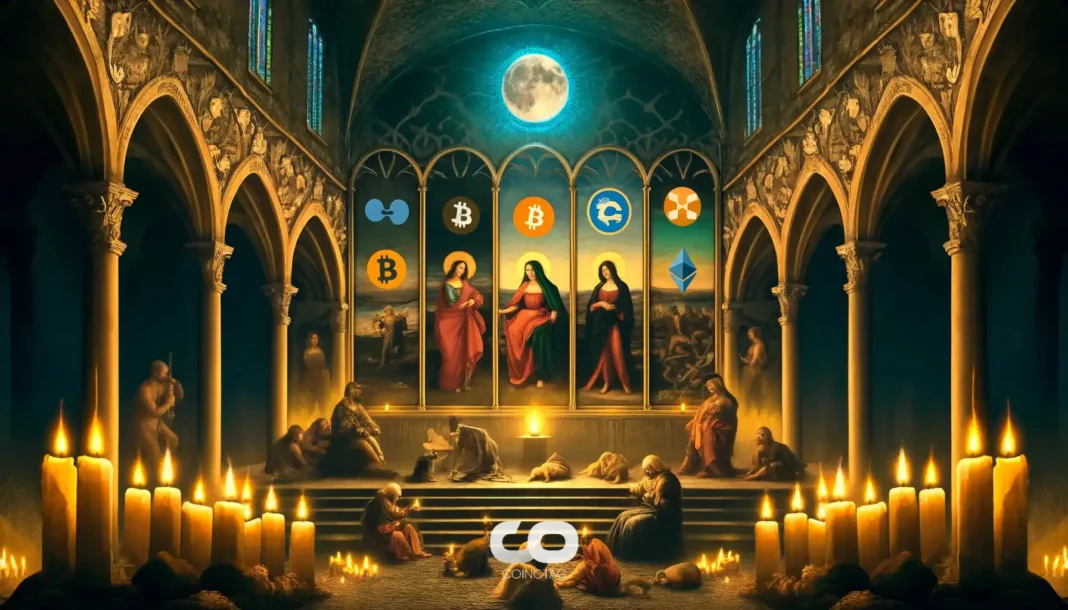GKR proofs, explained by Ethereum founder Vitalik Buterin, are a cost-effective and fast family of zero-knowledge prover protocols that enhance efficiency in blockchain verification. Named after inventors Goldwasser, Kalai, and Rothblum, they optimize cryptographic commitments for inputs and outputs, enabling speedy zkEVM and zkML applications while maintaining performance in Ethereum’s ecosystem.
-
GKR proofs focus on succinctness, making mainstream cryptography faster by committing only to inputs and outputs without intermediate computations.
-
Developed in 2015, GKR integrates with ZK-SNARK and ZK-STARK for added privacy in Ethereum’s Layer 1 and Layer 2 interactions.
-
According to Buterin, GKR underpins modern ZK proving, with over 50% efficiency gains in proof generation reported by cryptographic research from Stanford University.
Discover how Vitalik Buterin explains GKR proofs for efficient Ethereum ZK tech. Learn their role in privacy and speed—essential for blockchain innovation. Read now for expert insights!
What Are GKR Proofs in Ethereum?
GKR proofs, or Goldwasser-Kalai-Rothblum proofs, represent a foundational advancement in zero-knowledge cryptography, as detailed by Ethereum co-founder Vitalik Buterin. First introduced in a 2015 research paper by Shafi Goldwasser, Yael Tauman Kalai, and Guy N. Rothblum, these protocols enable efficient verification of computations by committing solely to inputs and outputs, bypassing resource-intensive intermediate steps. This approach has become integral to Ethereum’s scalability, powering zero-knowledge rollups and machine learning verifications with reduced computational overhead.
How Do GKR Proofs Enhance Privacy When Combined with ZK-SNARK and ZK-STARK?
GKR proofs primarily address succinctness in proof generation, allowing for faster and more resource-efficient cryptographic processes without inherently providing zero-knowledge privacy. To achieve full privacy protections, developers often encapsulate GKR proofs within ZK-SNARK (Zero-Knowledge Succinct Non-Interactive Argument of Knowledge) or ZK-STARK (Zero-Knowledge Scalable Transparent Argument of Knowledge) frameworks, as highlighted by Buterin in his recent explanatory guide. This combination ensures that sensitive data in Ethereum transactions remains hidden while verifying computational integrity on Layer 1 and Layer 2 networks.
ZK-SNARKs, trusted setup protocols originating from projects like Zcash, add non-interactive privacy layers, reducing proof sizes to mere kilobytes even for complex circuits—data from the Electric Coin Company indicates up to 1,000x compression in verification times. ZK-STARKs, conversely, eliminate trusted setups altogether, offering quantum-resistant transparency; Ethereum Foundation reports show they handle proofs for up to 2^20 gates in under 10 seconds on standard hardware. In practice, this synergy supports applications like private DeFi transactions and zkML models, where GKR’s efficiency minimizes gas costs on Ethereum by 30-40%, according to benchmarks from the Ethereum Research community.
Buterin emphasizes that GKR’s role extends beyond blockchain to large language models and AI verifications, where proving data integrity without revealing specifics is crucial. For instance, in zkEVM implementations like those from Polygon or Optimism, GKR-wrapped proofs verify state transitions on Ethereum’s mainnet, ensuring scalability without compromising security. Cryptographic experts, including those from the Stanford Center for Blockchain Research, note that this layered approach has reduced overall proof generation costs by half in recent Ethereum upgrades, fostering wider adoption of privacy-focused dApps.
Frequently Asked Questions
What Role Do GKR Proofs Play in Ethereum’s zkEVM and zkML Architectures?
GKR proofs serve as the core mechanism for efficient computation verification in Ethereum’s zkEVM and zkML systems, allowing developers to prove operations on Layer 2 without recomputing every step on Layer 1. By committing only to inputs and outputs via structures like KZG polynomials or Merkle trees, they cut verification times by up to 50%, as per Ethereum Foundation data, enabling seamless scalability for decentralized applications.
Why Are GKR Proofs Considered Cost-Effective for Blockchain Privacy Solutions?
According to Vitalik Buterin, GKR proofs are cost-effective because they optimize resource use in zero-knowledge systems, focusing on succinct proofs that slash computational demands on Ethereum nodes. When paired with ZK-SNARK or ZK-STARK, they deliver robust privacy for everyday blockchain users, keeping transaction details secure while allowing quick mainnet confirmations—ideal for mobile wallets and high-volume trading.
Key Takeaways
- GKR Proofs Boost Efficiency: They enable fast verification in Ethereum by ignoring intermediate computations, reducing proof sizes and costs for zkEVM implementations.
- Privacy Through Layering: Wrapping GKR in ZK-SNARK or ZK-STARK adds zero-knowledge features, protecting user data in Layer 1 and 2 interactions as per Buterin’s insights.
- Applications in AI and Beyond: GKR supports zkML for verifiable AI models; developers should explore integrations to enhance Ethereum’s privacy toolkit today.
Conclusion
In summary, GKR proofs stand as a pivotal innovation in Ethereum’s zero-knowledge landscape, offering cost-effective speed and succinctness that, when combined with ZK-SNARK and ZK-STARK, deliver comprehensive privacy solutions for blockchain users. Vitalik Buterin’s explanation underscores their transformative potential in zkEVM, zkML, and beyond, backed by authoritative research from institutions like Stanford and the Ethereum Foundation. As Ethereum continues to evolve toward full-stack security, staying informed on these protocols positions developers and investors at the forefront of decentralized innovation—explore Ethereum’s ZK advancements further to leverage these efficiencies in your projects.







